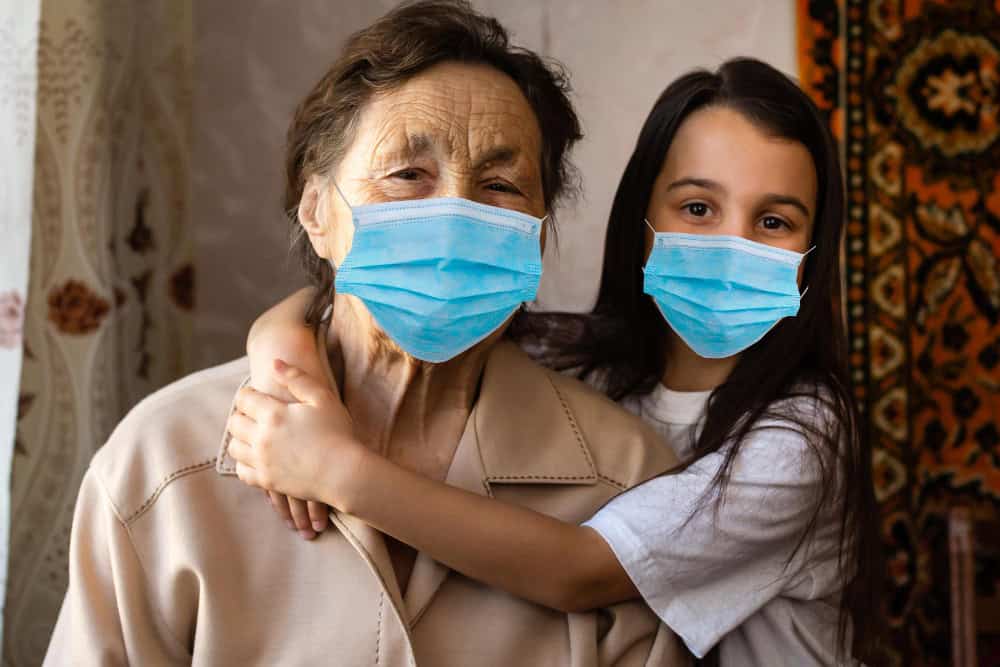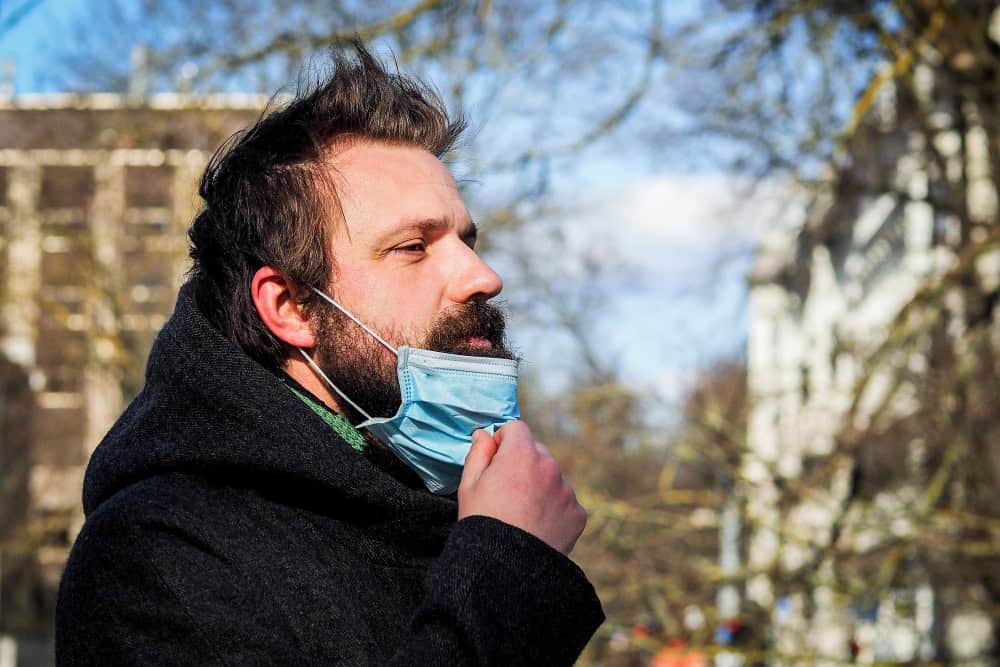
Respiratory illnesses have been on the rise in recent weeks, with many people experiencing fever, persistent cough, and COVID-like symptoms. According to the surveillance data from the Indian Council of Medical Research (ICMR) from 15 December 2022 to date, the H3N2 Influenza virus has emerged as the primary cause behind this surge, along with other viruses. [1] Nearly half of all severe acute respiratory illness (SARI) cases and Influenza-like illnesses are caused by this strain.
Have you been feeling under the weather, too?
Let’s explore the details about H3N2 flu, its symptoms, why this virus can be concerning, and the steps you can take to protect yourself and your family.
What Is H3N2 Influenza?

The Influenza virus falls under four broad types: A, B, C, and D. Among them, Influenza A is the most common type and is known to cause widespread seasonal outbreaks.
H3N2 is a subtype of the Influenza A virus, characterised by changes in its surface protein. These mutations allow the virus to spread quickly and sometimes cause more severe symptoms compared to other flu subtypes. While it may feel similar to a cold or even COVID, special tests are often required to confirm whether you are dealing with H3N2 or another virus.
The H3N2 Influenza Can Be More Concerning

Recent data suggest that H3N2 is leading to more hospitalizations than other Influenza subtypes. [2] There is a higher risk of severe symptoms like high fever, wheezing, coughing, breathlessness, clinical signs of seizure, and pneumonia in some hospitalized patients [2], with some cases requiring oxygen and ICU care too.
The symptoms appear to be more severe in terms of fever severity compared to other influenza strains [3], such as H1N1 or Influenza B. Although most of the infections generally last for 5-7 days, in 3 days the fever may go away, but the cough and throat discomfort may persist for up to three weeks. In some cases, additional symptoms such as vomiting or diarrhea may also occur.
Common Symptoms Of H3N2 Influenza

Like other respiratory infections, H3N2 can be present with overlapping symptoms; the most common include:
– High Fever
– Persistent Cough
– Sore Throat
– Wheezing or difficulty breathing
– Severe weakness, fatigue, and body aches
– Runny or congested nose
– In some cases, vomiting and diarrhea
Because these symptoms mimic COVID and other respiratory illnesses, testing is crucial for accurate diagnosis.
As a preventive care, Book Your Fever Advanced Panel* Today.
* This package provides a complete flu screening by testing for both Influenza A and Influenza B viruses. The technique of testing is PCR (similar to COVID); hence, a swab sample will be required.
Who Is At Higher Risk Of H3N2?

Certain groups are more susceptible to severe complications from H3N2 Influenza, such as:
- Elderly individuals (65 years and above)
- Young children (below 5 years and especially under 2 years)
- Pregnant women
- Individuals who have chronic conditions like diabetes, heart disease, kidney disease, severe anaemia (sickle cell anaemia), or respiratory disorders.
- People with a body mass index (BMI) of 40 or higher (obese)
In these groups, due to medications or diseases, the immune system is suppressed over time, causing weakened immune systems, which leads to infection and severe complications that may require a person to be hospitalised.
Prevention Tips To Stay Safe From H3N2 Influenza
1. Proper Hand Hygiene

Wash your hands frequently with soap and water. Use alcohol-based sanitizers when soap is not available. Always cover your mouth and nose with a tissue or elbow while coughing or sneezing. Avoid spitting in public spaces and wear your masks, as it reduces the risk of inhaling infectious droplets, especially in poorly ventilated or crowded areas.
From medicines to masks, from tests to hygiene supplies, get your flu care delivered to your home.
2. Get Your Annual Flu Shot

An annual flu shot is a simple way to prevent getting severe flu. You may need to get the flu vaccine every year. Since the flu virus changes quite frequently, last year’s vaccine may not protect you from the current one. That’s why the flu vaccine is updated every year to protect against circulating strains, including H3N2, and an annual flu shot is a simple preventive measure that can protect you from getting the severe flu.
Consult your doctor and schedule your vaccination.
3. Special Care Needed For People at Higher Risk

The elderly, pregnant women, young kids, and people with chronic medical conditions like heart disease, diabetes, etc., can have an increased risk of developing more serious flu complications, such as pneumonia, ear infections, etc. If the symptoms persist for more than 3 days or worsen, consult a medical professional.
Need to be more sure that you and your loved ones are safe?
4. Avoid Antibiotic Misuse

Remember, antibiotics don’t work against viruses like Influenza; they work against bacteria. Mostly, a symptomatic approach to treatment suffices. Use antiviral medications or supportive care only as prescribed by your doctor.
Misusing antibiotics increases the risk of antibiotic resistance, which may cause them to be ineffective when they are really needed.
5. Rest and Hydrate

Drink plenty of fluids to stay hydrated, get adequate sleep and rest, and avoid going out until you feel better. Consider going back to your normal routine (of going to work or school) only when you haven’t had symptoms for at least 24 hours. Some children may need more time than others to recover and hence may need to stay home longer.
6. Also, Watch Out For Environmental Factors

Air pollution can also worsen flu outcomes. Long-term exposure to polluted air can increase the risk of respiratory complications.
Were you continuously exposed to high pollution? Check for its effects with a simple blood test. Book A Test In Just A Click!
Simple Steps To Follow If You Get H3N2 Influenza

In mild cases, symptomatic treatment can be done with rest, fluids, and over-the-counter fever medicines. Whereas in moderate to severe cases, you may require antivirals, oxygen therapy, or hospital monitoring (if you are in high-risk groups). Always follow a doctor’s guidance. Do not self-medicate.
Final Takeaway
The surge in H3N2 Influenza cases across India is a reminder that seasonal viruses can still cause serious health concerns, especially for vulnerable populations. By practising preventive measures, you can protect yourself and your loved ones. If you feel flu-like symptoms, don’t ignore them. Get tested, consult a doctor, and rest well.
(The article is written by Sneha Jajoo, Intern, Clinical Health & Content, and is reviewed by Dr.Subita Alagh, Assistant Team Lead, Disease Content.)
Recommended Reads:
Respiratory Infections in Children: Causes and Prevention Tips Parents Should Know
How To Stay Safe From Eye Flu During Monsoon?
FAQs
Q. Is H3N2 Influenza serious?
Yes, it can be more severe than other flu viruses, especially in children, older people, and those with chronic health conditions, sometimes leading to hospitalization.
Q. What is the recovery time for H3N2?
Most cases last 5-7 days, but cough and throat discomfort may persist for up to 2 weeks.
Q. When should I see a doctor for H3N2?
If symptoms persist beyond 3 days or you suffer from severe signs like breathlessness, chest pain, etc., consult a doctor immediately.
Q. What is H3N2 also known as?
H3N2 is a subtype of the Influenza A virus and is also known as “Hong Kong flu” or the “Aussie flu”.
References
1. https://pib.gov.in/PressReleasePage.aspx?PRID=1905602; https://twitter.com/ANI/status/1631677691987480579/photo/1
2. MoHFW. https://www.instagram.com/p/Cpm1pRxIRAd/?igshid=MDJmNzVkMjY%3D
3. Kaji M, Watanabe A, Aizawa H. Differences in clinical features between influenza A H1N1, A H3N2, and B in adult patients. Respirology.